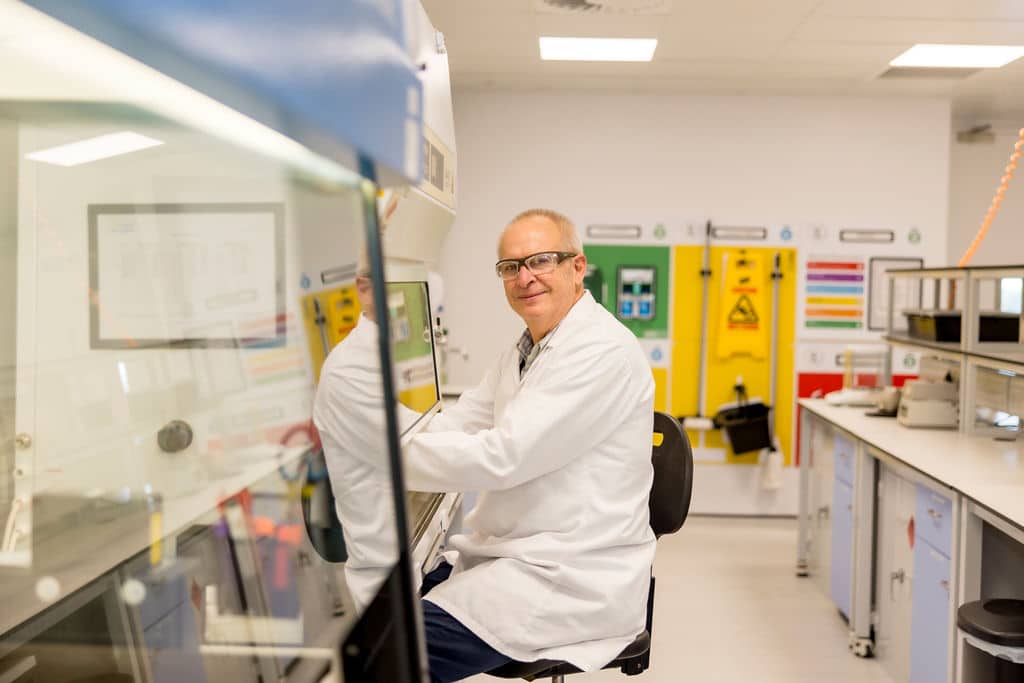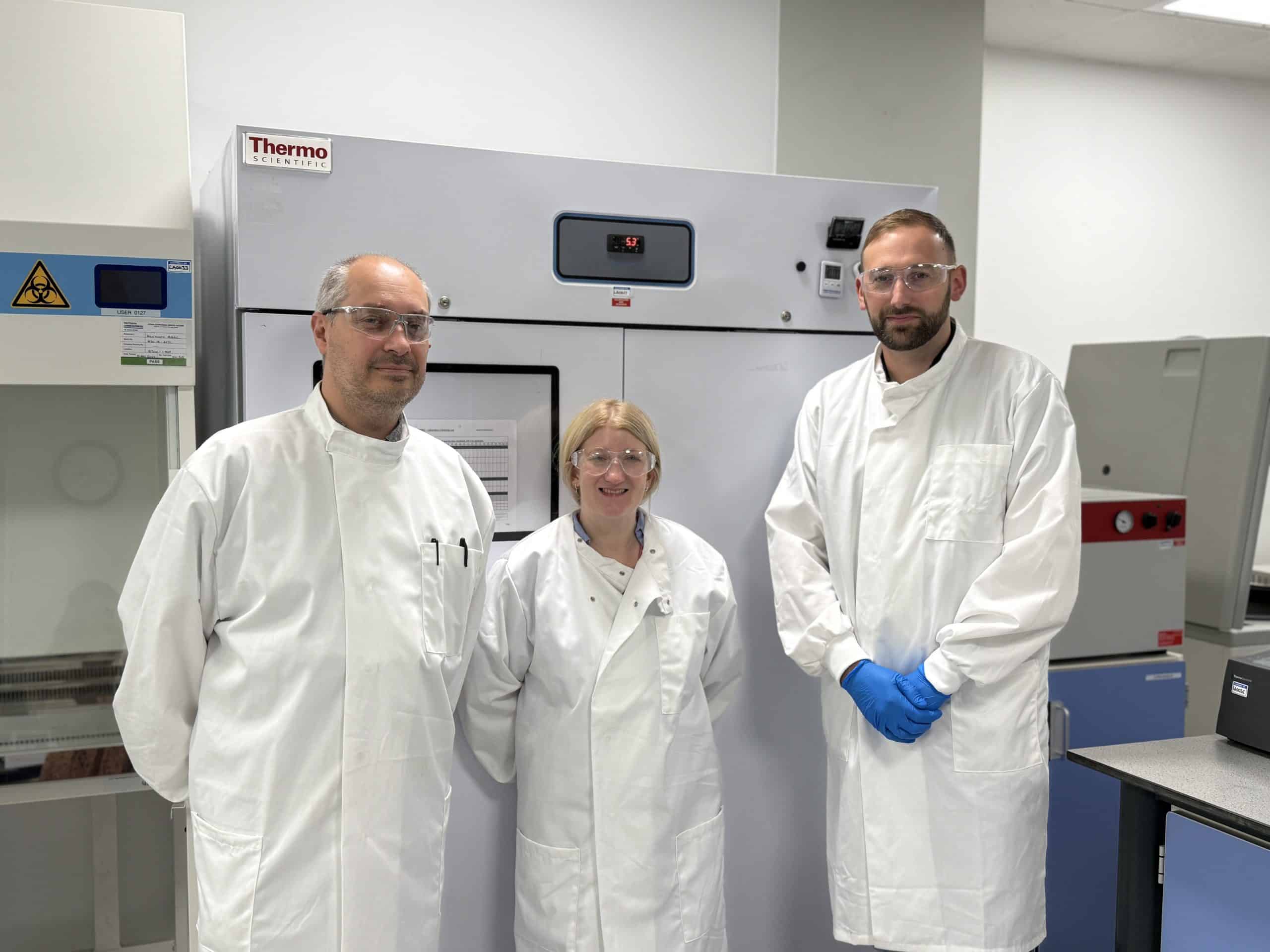What are Ct values?
In quantitative PCR (qPCR) and reverse transcriptase quantitative PCR (RT-qPCR), the cycle threshold (Ct) value is the number of nucleic acid amplification cycles required for the signal generated by the amplification of a specific target DNA to cross a set threshold. Labelling the DNA primers with a fluorescent tag is what makes this PCR ‘real time’; as the target genetic material increases with each amplification cycle so does the fluorescence signal.

The lower the amplification cycles required to meet the threshold, the higher the level of target nucleic acid (and thus virus in the case of SARS-CoV-2) in the patient sample. Therefore Ct values are inversely related to viral load. Within a specific test the Ct value result is compared to a value often known as a ‘cut-off’. A value lower than the cut-off is a positive result (for COVID-19 meaning the patient most likely has the infection), whereas a value higher than the cut-off is a negative result.
Many of Logical Biological’s COVID-19 swab samples are tested using Thermo-Fisher Taqpath, which has a positive cut-off of Ct ≤37. In that test, a sample with a Ct of 36 would be a low positive. At the other end of the range, Ct values below 20 would be considered a strong positive, and we have infrequently seen values below 15.
Ct values and COVID-19
The course of SARS-CoV-2 infection shows viral levels vary throughout the duration of the disease, peaking a few days after symptom onset. Correspondingly RT-qPCR Ct values should alter depending on the timeline of an individuals infection. The lower the Ct values the increased probability the patient is near to peak-infection. However there are multiple practical factors unrelated to the actual infection that may also affect the Ct value achieved.

Correspondence between development of viral load during SARS-CoV-2 infection, clinical course and positivity of quantitative rRT-PCR assays (r = real-time). (Lippi et al, 2020).
qPCR/RT-qPCR Ct value variables include but are not limited to:
- Swabbing protocol
- Swabbing technique
- Swab type
- Swab brand
- Sample storage time
- Sample storage conditions
- UTM/VTM brand
- RNA extraction method
- PCR reagents used
- PCR test kit used
- Patient days since infection
- Patient viral load
- Environmental contamination
- Standard quantification curves
With so many variables any comparison of Ct values between individuals has obvious limitations.
Clinical Use of Covid-19 Ct data
Cycle threshold values are beginning to be used for COVID-19 patients as there is a suggested relationship between viral load and prognosis. Lower Ct values have been linked to a worse course of illness and poorer outcomes. Clinicians have been encouraged to interpret the SARS-CoV-2 RT-qPCR test results and consider the Ct value where appropriate.

A positive PCR test alone does not correlate with infectivity (Tom and Mina, 2020); a positive test with high Ct value may indicate the patient is not infectious. If this information could be used to inform patient isolation decisions it could transform quarantine restrictions and take significant steps in reducing the already extensive economic consequences of the pandemic, not to mention the mental health implications of isolation. Conversely, low Ct values may indicate a high level of infectiousness, acting as a signal to healthcare professionals to ensure the patient remains isolated and avoid releasing them into the general population until their Ct value increases sufficiently. The challenge here is reliably using Ct values to determine infectiousness.
Contradictory research regarding viral load and shedding in asymptomatic cases require further investigation. Measuring asymptomatic Ct values provided evidence of little difference when compared to symptomatic cases, implying similar viral load. On the other hand, other researchers found asymptomatic cases tested had no viable SARS-CoV-2 virus and no evidence of viral transmission for these carriers. This particular study should be viewed in the context of the virus persisting undetected in a population (Wuhan) where non-pharmaceutical interventions had been used to almost eradicate the virus from the population over a relatively long period of time; selection for a weakened strain may have occurred.
Ct values and disease diagnosis test development
While the value of Ct values to clinicians is debatable, they definitely have utility in in vitro diagnostic (IVD) assay development. Assay sensitivity can be defined as the proportion of true positive samples that actually test positive. SARS-CoV-2 test makers are motivated to produce sensitive tests able to even detect virus in patient samples where the viral load is low. Lateral Flow SARS-CoV-2 antigen test manufacturers, for example, may use patient samples with known RT-qPCR Ct values to determine how the samples test in their assay. Samples with very low Ct counts (high viral loads) would be expected to test positive, but by testing samples with increasing Ct counts (lower viral loads) assay developers can assess the performance of their test, understand what viral loads correspond with a failure of their test to detect, and work to optimise assay performance where necessary.
Conclusions
Ct values have limited use in clinical settings. A multitude of variables impact on the viral load and a separate large set of variables impact on patient outcomes (e.g. age). Ultimately Ct values are not easily comparable between assays or patients. It is possible they can be used to assist patient prognosis in some circumstances where a full clinical history is available.
However, in vitro diagnostic assay developers find Ct values useful as a way of quickly determining the lower limit of detection of the tests they are developing. In this way, Ct data has a great value in contributing to the development of sensitive tests.
Available from Logical Biological
At Logical Biological we supply nasopharyngeal/oropharyngeal/nasal SARS-CoV-2, FluA and Flu B swabs available in Universal Transport Medium (UTM), Inactivating Transport Medium (ITM), saline or in dry frozen format. Negative swabs and COVID-19 / pre-COVID saliva are also available, as are serum and plasma. Typically, our swabs are provided together a Ct value measured from a ‘companion swab’ taken simultaneously. For UTM & ITM we can provide remnant samples at your preferred Ct values.

Table: Products available from Logical Biological
Want to hear more from Logical Biological?
Sign up to our newsletter to for the latest updates.
Subscribe Now




)